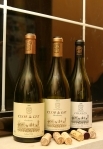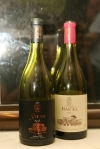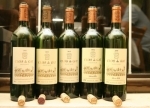One of the most controversial issues in the world of wine is wine review\critique. More than once I’ve seen the demand for a certain wine rise, and consequently its price, after receiving a good critique from a world renowned wine critique. This phenomenon is a direct result of “Score Chasing”. Score Chasers are those people who run and buy wines which received high scores by critiques. Nowadays critiques can be found everywhere – In magazines, blogs, forums, newspapers etc. So, how can we still enjoy reading wine critiques without being badly influenced by it? How can we prevent ourselves from becoming “Score Chasers”?
Wine Critiques – Objective or Subjective?
Can\Should we consider wine critiques as Objective? Or should the mere “Scoring” turn them, in our eyes, as subjective, as 10 points given to the scent of a wine could never be considered as an absolute fact. In my opinion – Both.
Wine critiques are both Objective & Subjective, dependent to the part of the critique we refer to. In order to explain this notation, I would first like to describe the structure of a basic wine critique. Than we can analyze which part should be considered objective and which subjective.
Wine Critique Structure
The typical wine critique includes the following parts:
- Technical Details – Name, Vintage, Varietals, Alcohol, etc.
- Additional Details – Series, Vintage, Winery
- The Main Critique – Color, Scents, Flavors that compose the wine
- The Score – A numeral representation of the critique
- Future Evaluation – Aging ability & Current status
- General Details – Additional data that does not fall under any other category
Objective or Subjective
Technical Details – technical details are with no doubt objective, and give us important information regarding the wine.
Additional Details – Most of this part will usually be objective and include additional technical information, not necessarily related to the wine itself, such as the quality of the vintage, series details etc. However, in this part it is important to notice that the writers own opinion does not find itself by accident added to the critique.
The Main Critique – This is where things get complicated, as different people have different level of senses. It is very likely that some have more sensitive senses then others. Many researches show that woman have better sense of small then man, something that defiantly assists when one analyzes a wine’s fragrance. If so, how should we consider this part of the critique?
Even though different people have different sense levels, the major fragrances and flavors composing a wine will be noticeable to any trained taster. A given tester may small or tastes an additional flavor in a wine, but most tasters will show a general consistency on which we can build a solid critique.
The Score – This in my eyes, is the most subjective part of the tasting. Set aside the fact that different tasters have different scoring methods, even tasters how use the exact same scoring method can translate a gives flavor to a different number. At a tasting in which 2 tasters notice concentrated fruit, the first taster, how prefers concentrated flavors may give a higher score to such wine, where a second taster, how prefers more saddle tastes would give a lower score to the same verbal description, therefore this part should be considered purely subjective.
There are even more problems with “Scoring” a wine, such as – Giving wines from high valued wineries good score by default or the wish to not deviate from the score scale given to a wine by other critiques.
Future Evaluation -Even though this is the writer’s personal opinion as to the aging ability of a wine, this assumption usually relies on his experience and could be considered positively.
General Details -This section may include food matching, wine maker review, and any other information involving the wine. This information should be read carefully and you should mind whether the information is a fact or the writer’s own personal opinion of things.
Points to Consider
Personal Flavor – Even the most impressive wine critique, from a world renowned wine critique, will not make a wine more fitting for your pallet as each and every one of us has its own unique pallet. For example – I prefer wines with concentrated scents and flavors, and do not like wines in which the barrel can be noticed. Learn your pallet, examine different wines and figure out which are your favorite varietals, alcohol level, fruit level, flavors, etc.
Read Wine Critique – Preferably from more than one wine critique and then try the wine. Figure out which of the critiques was closer to what you felt when you drunk the wine. You might find a wine critique on which you can relay, maybe more than one.
Loved a Wine – Learn it – If you tasted a wine you like, learn its technical details – varietals, alcohol, vintage, terroir. Using these details you will be able to define your pallet and even locate new wine to match it.
Summery
When reading a critique, I try to figure out whether that wine discussed fits my pallet or not. I try and focus on the technical details of the wine and the description of scents and flavors, as this is the real information from which you can learn about the wine.
I would love to hear your thoughts about this issue, so feel free to drop a comment.
Filed under: Penny for Your Thoughts | Tagged: General, Wine | 1 Comment »





